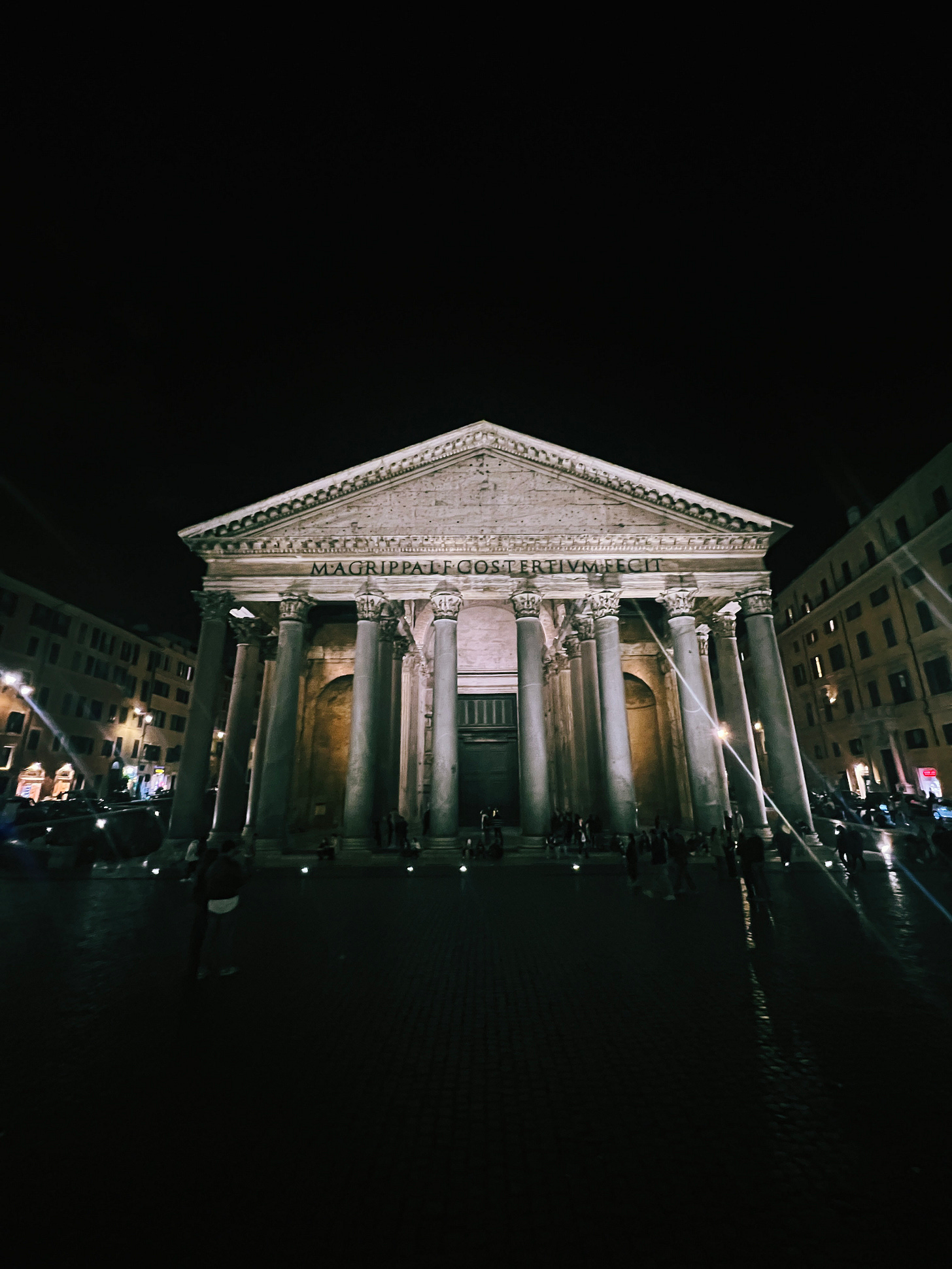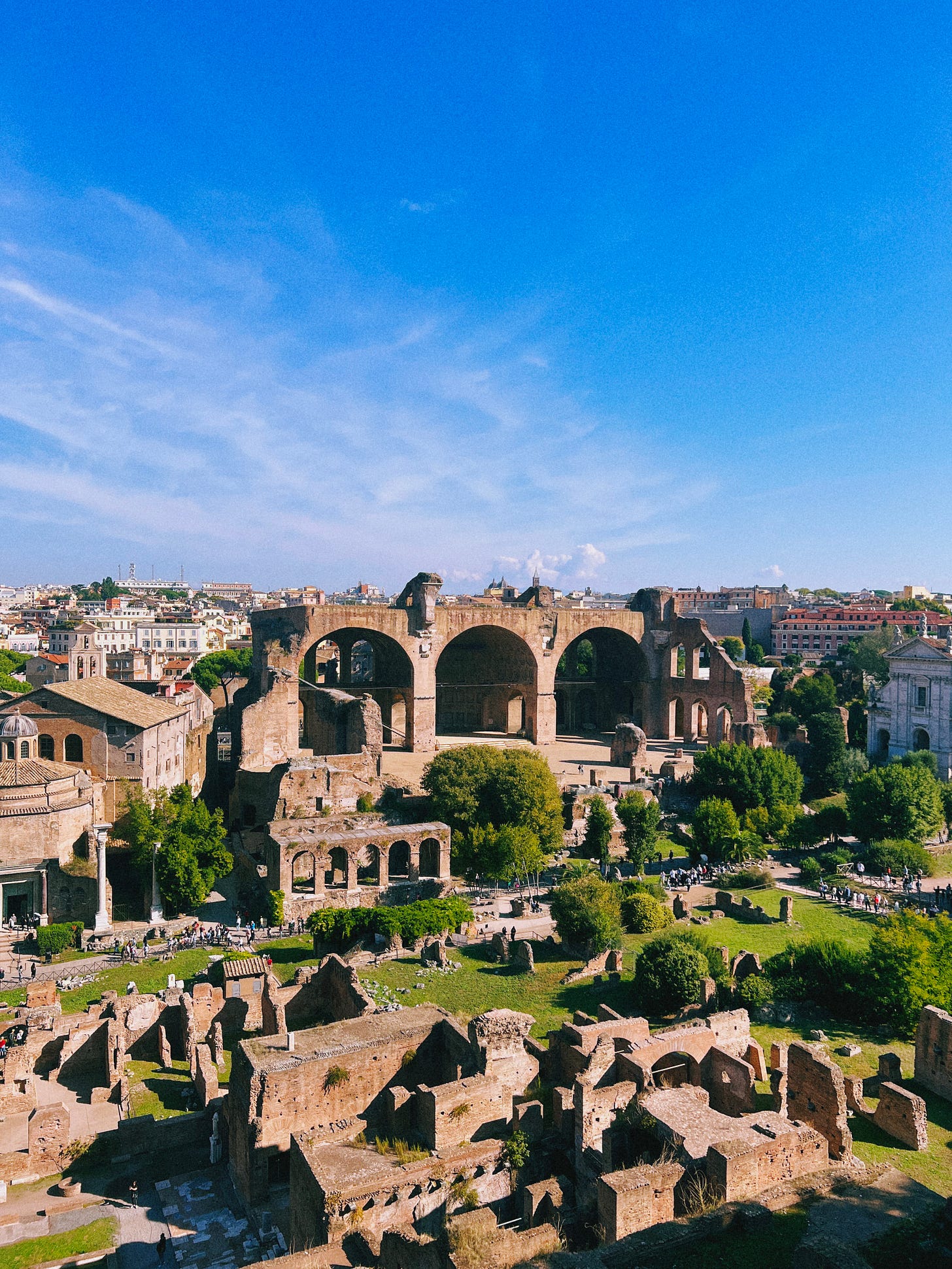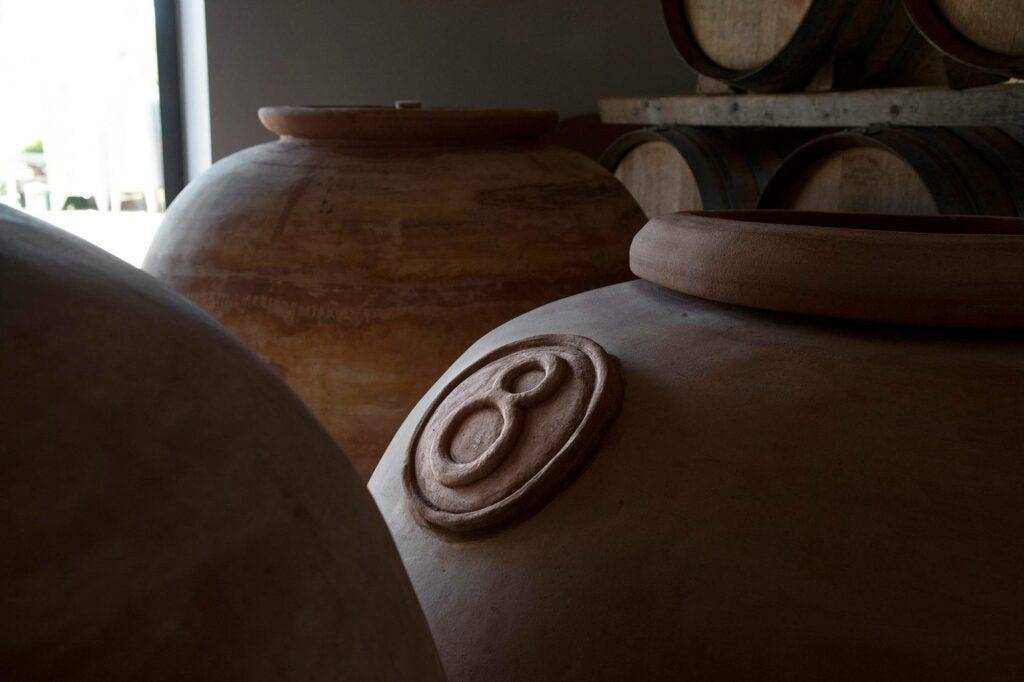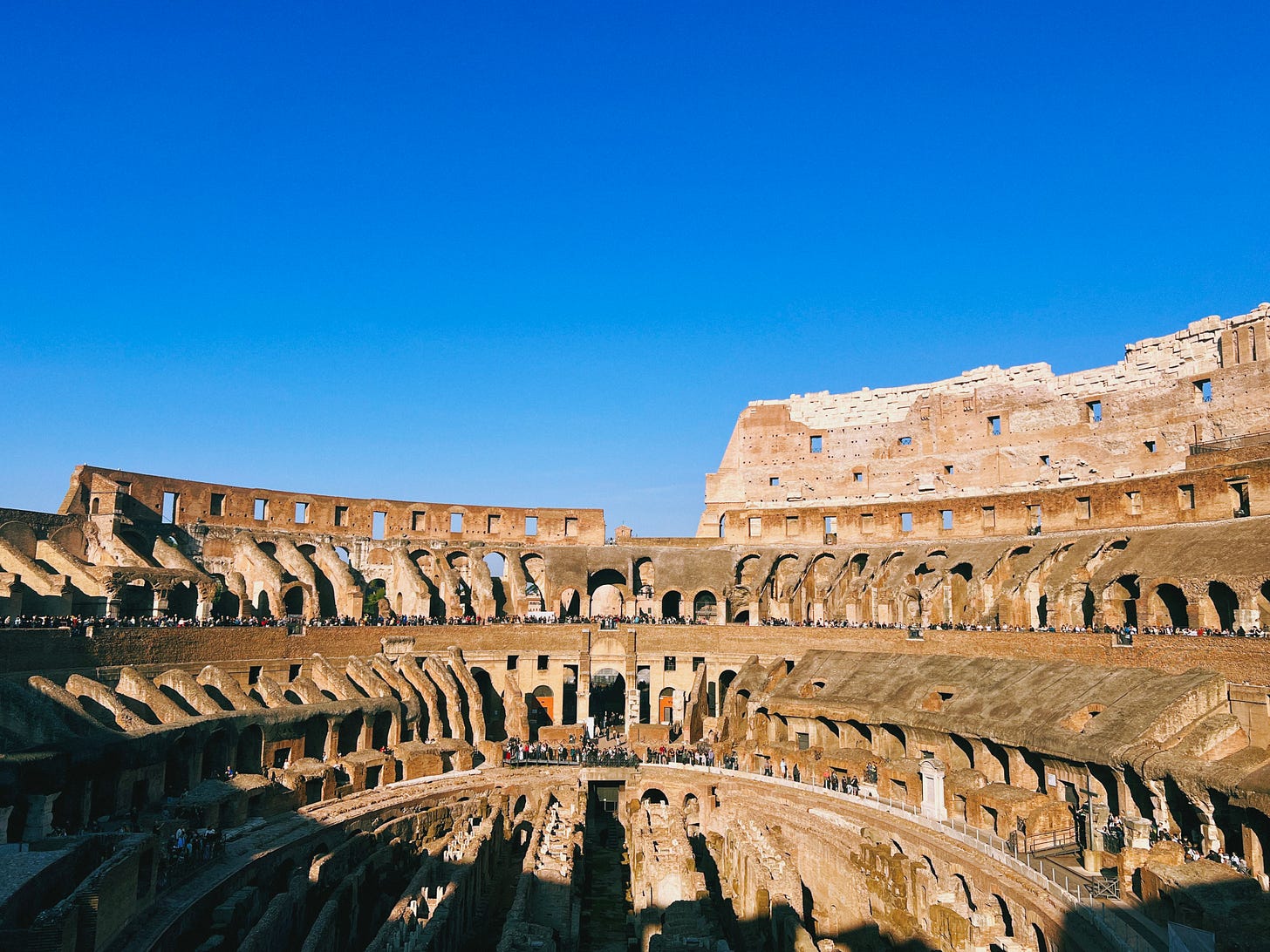When in Rome
A trip through Florence and Rome touches on the limits and promise of AI in travel
I’ve long been fascinated by the way technology influences how we travel, so naturally I’m curious how AI will change that too. A lot of travel AI has been a bit of a flop thus far: chatbots that promise to plan your perfect trip but deliver generic itineraries that a thousand travel bloggers have SEO’d to death or janky experiences that don’t deliver on the “promises” of AI. But there’s no question it’s going to continue to be a factor in tourism for years to come, whether you like it or not.
I just spent a few days in Italy with friends, visiting Florence and Rome. The trip became an inadvertent experiment in where AI actually helps versus where it gets in the way. The short version? The best moments were unplanned. But having a tireless, knowledgeable guide in my pocket? Pretty nice.
Where lists fall short
I’m not much of a planner, hence why although I’d love to spend an extended amount of time staying/skiing somewhere in the Alps this winter, I haven’t booked anything yet. But in Florence, one of our friends we were traveling with is an impressive planner (think spreadsheets, itineraries, months ahead of time) and he uses ChatGPT extensively (he’s taken to just calling it “Chad”). One way he used it for this trip was to map out potential day-trip routes and sights through Chianti: first by e-bike, then by Vespa. ChatGPT gave us solid suggestions, the kind of stuff you’d find in a decent guidebook or blog post. It provided a good foundational recommendation for our days, but the best experiences still ended up being driven by local recommendations and spontaneity.
Case in point: while e-biking, we stopped at an organic winery not because it was on any list, or even recommended, but because it looked interesting as we were biking by. Ottomani turned out to be one of the best experiences of the trip. Eight friends started it together (ottomani means “eight hands” in Italian), and they make wine using organic techniques, including aging in clay amphoras made in nearby Impruneta. Our guide around the property was a former ER nurse who’d changed careers to work in wine, and she gave us the best crash course on cultivation, Chianti terroir, and the business of winemaking that we got anywhere. None of us are heavy wine drinkers, but the clay pot wine (I think the IGT Toscana Sangiovese Amphora) was a universal favorite from our entire time in Italy.
Ottomani didn’t come up in ChatGPT. We didn’t pick it out of a “Top 10 Chianti Wineries” listicle. It doesn’t have 1200 reviews. It was complete serendipity.
On our Vespa day, we changed tack just a bit to prioritize a town our extremely friendly rental guy suggested over another. We later made some course adjustments, taking the Vespas to explore a few gravel roads that were, let’s say, “techy” on the little 125cc motorbikes. Our winery choices were hit and miss, but that’s life. One tasting felt pushy and commercial. Another was delightfully friendly, had dogs running around, and was generally a great vibe, great view, and great wine. Both ended up being more spur of the moment choices, as we got shut out on a few others we found online that were busy, closed, or not doing tastings.
In Florence we did wait in line at l’Antico Vinaio (it moves pretty fast), a sandwich shop that I’ve now found out is huge on social media. It has four locations on the same street, taking over the entire Via dei Neri with people waiting for a focaccia. The sandwich was good. Was it significantly better than a sandwich from almost anywhere else in Florence? Maybe not. But they’ve captured the algorithm/influencer crowd. If you really want to try one, there’s also a location in the train station without the lines (but lacking the ”I did the thing” social media video vibes).
This one isn’t ChatGPT’s fault, it’s TikTok, Instagram, and also a thousand travel bloggers creating the same feedback loop. I actually asked ChatGPT a few times for sandwich shops and it didn’t come up in the initial recommendations, which was interesting. Reliance on social media, blogs, and Google can limit you in many of the same ways that ChatGPT might.
Where it works
Rome changed my perspective on AI while traveling.
I’m the cliché guy who thinks about the Roman Empire regularly. I grew up reading Greek and Roman mythology, when someone asks “what time period from history would you visit,” I’d say the Pax Romana (particularly the reign of Augustus or the Five Good Emperors), and I can give you a rough timeline from the founding to the fall. I’ve read a few books (working my way through Pax right now). Visiting Rome has been on my list for years.
The city is overwhelmingly crowded and layered with 3,000 years of history. Two-thousand-year-old facades next to 15th-century churches next to modern buildings. Just looking at an impressive facade, there’s an equal chance it was commissioned by a pope 500 years ago or an emperor 2,000 years ago. For someone like me, the sheer amount of sights and history is simultaneously fascinating and paralyzing.
I’m not a fan of guided tours (of which there are thousands roaming around the crowds of Rome). I prefer wandering at my own pace, stumbling upon things, and letting curiosity and my fast-walking feet take me to whatever is next. But, I also enjoy actually understanding what I’m seeing, not just taking selfies. I’m one of those people who will spend an hour on Wikipedia after a brief conversation about a random topic.
I spent one late night walking solo through Rome with ChatGPT as my guide (highly recommend, fewer crowds, still great vibes). The process was simple: I’d tell it where I was, ask for interesting spots nearby focused on ancient Roman history (less interested in religious stuff, medieval churches, etc), then wander and use it for deeper context on things I encountered. It works particularly well if you use AirPods and the voice chat feature: no need to constantly pull out your phone, just have a conversation. You can interrupt, clarify, and ask more detailed questions. It’s kinda scary good. A typical interaction: see an interesting old thing, check the name on a plaque or Google Maps, ask ChatGPT to tell me more.
Near midnight I spent 20 minutes sitting in the Piazza della Rotonda, eating gelato, staring at the Pantheon, and learning about the architectural genius of the Pantheon and the concrete technology that made that dome possible. “Tell me about the Pantheon.” “More about the engineering.” “What were Marcus Agrippa’s most significant victories?” “How did Agrippa influence Augustus’s reign and later emperors?” “Why did Hadrian leave Agrippa’s name on the Pantheon when he rebuilt it?”. Yes, these are things that are possible to just Google, but nowhere near as easily.

The next day this same process worked especially well. The Colosseum has a pretty detailed museum and history, but in the densely packed areas of Palatine Hill and the Roman Forum, there’s an overwhelming amount to see and surprisingly sparse signage. Maybe I wanted to go deeper than the single plaque about the Domus Augusti (the residence of Emperor Augustus), or understand the significance of the Basilica of Maxentius and Constantine. I was able to both satisfy my own curiosity and also play tour guide for the rest of the group (although I think they tired of my factoids long before I did).

For me, at least, the experience was significantly enhanced by how I was able to interact with ChatGPT. Even as a Rome buff, there’s only so many ruins you can look at that are just “wow, cool old thing”, vs. “This is what it is, why it was important, and how it fits into the overarching story of this place”. I think it honestly really elevated what I took away from visiting here.
Finding the balance
The lesson from this trip isn’t that AI makes travel better or worse. It’s that it’s a tool, and like any tool, it works well for certain jobs and poorly for others.
AI excels at synthesis and context. It’s a tireless expert that can help you understand what you’re seeing, suggest routes based on your interests, and answer the tenth follow-up question without getting annoyed. It doesn’t need to follow a particular route, and it doesn’t care if I stop for an espresso or to read a book in a random piazza for an hour. Depending on how you interact with it, it might give you the same popular spots as the rest of the internet, or it might unlock something new an unique that you’d never have known or found. It might be redundant, or save you a ton of research time on something more complicated. But, it will never know that the winery that looks interesting from the road will have a former ER nurse turned winemaker who’ll provide one of the most enjoyable experiences and best wine of the trip.
In my opinion, the best travel experiences will always require putting yourself in position to be surprised, and equally, to be disappointed. To talk to Luka. To stop at the random winery without looking at reviews. To take the side road. To sit in a piazza at midnight and soak in the history in front of you.
Finding that balance between plans, must-see sights, and comfort with ambiguity isn’t an AI or no-AI problem, it’s the tension at the heart of modern tourism. The way we travel today is shaped by the way social media algorithms, guidebooks, SEO and more influence our decisions and habits. But, that’s part of the fun. The point isn’t to travel without tools; it’s to figure out how to use them in ways that get you the kind of travel experiences that are right for you.








